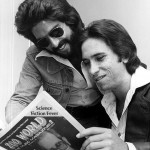I’m not sure it qualifies as an actual war, but politicians such as U.S. Representative Lamar Smith and Senator Tom Coburn have certainly been firing broadsides at the National Science Foundation and social science research. So it is heartening to hear President Barack Obama single out the social sciences in his speech at the 150th anniversary meeting of the National Academy of Sciences on Monday. The President pledged to protect peer review and research integrity:
With all the one of the things that I’ve tried to do over these last four years and will continue to do over the next four years is to make sure that we are promoting the integrity of our scientific process; that not just in the physical and life sciences, but also in fields like psychology and anthropology and economics and political science — all of which are sciences because scholars develop and test hypotheses and subject them to peer review — but in all the sciences, we’ve got to make sure that we are supporting the idea that they’re not subject to politics, that they’re not skewed by an agenda, that, as I said before, we make sure that we go where the evidence leads us. And that’s why we’ve got to keep investing in these sciences.
And what’s true of all sciences is that in order for us to maintain our edge, we’ve got to protect our rigorous peer review system and ensure that we only fund proposals that promise the biggest bang for taxpayer dollars. And I will keep working to make sure that our scientific research does not fall victim to political maneuvers or agendas that in some ways would impact on the integrity of the scientific process. That’s what’s going to maintain our standards of scientific excellence for years to come.
Some sociologists will bristle because we weren’t enumerated alongside psychology and political science, while others will surely take issue with the President’s emphasis on hypothesis testing. I’m just glad to hear such a clear statement of support for the social sciences and the integrity and independence of the NSF review process — especially in light of Representative Smith’s draft “High Quality Research Act.”








